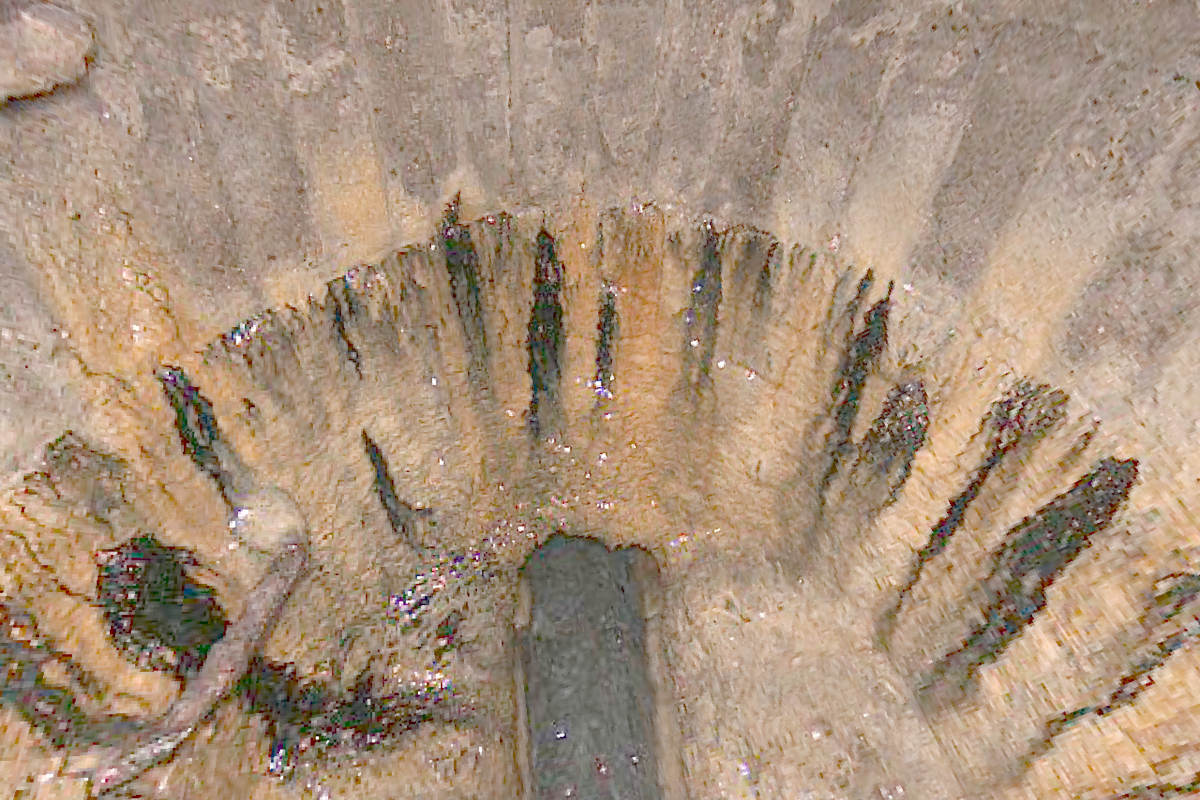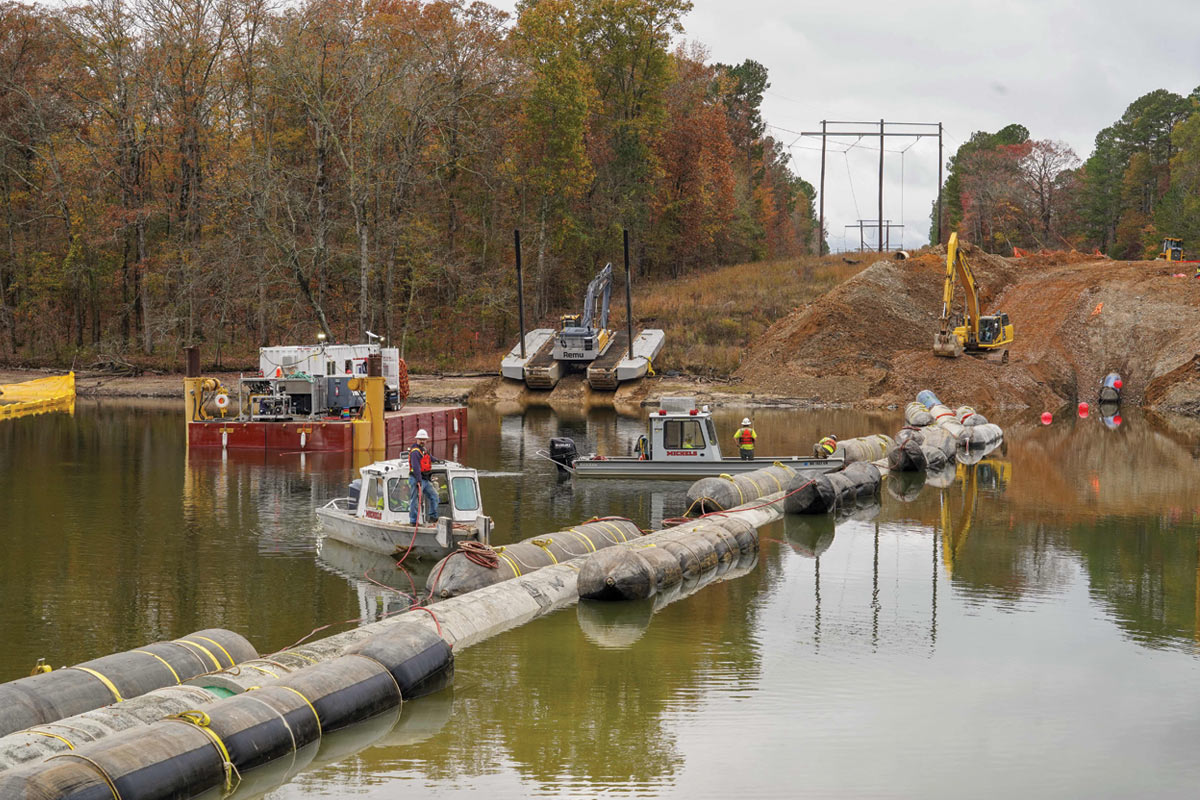2011 Trenchless Technology New Installation Project of the Year Winner
October 27, 2011
 The 113-year-old East Boston Branch Sewer was in dire need of a renovation. Its outdated system carried a mix of sanitary sewage and stormwater to the East Boston Caruso Pump Station — located at the Chelsea Street Bridge — and then to Deer Island for treatment. During heavy rains, the system became overloaded and released excess flows into the Boston Harbor. The Massachusetts Water Resources Authority (MWRA) was ordered by a federal court to clean up the harbor, thus requiring a $90 million design and construction project to replace and rehabilitate 4.5 miles of its sewer system.
The 113-year-old East Boston Branch Sewer was in dire need of a renovation. Its outdated system carried a mix of sanitary sewage and stormwater to the East Boston Caruso Pump Station — located at the Chelsea Street Bridge — and then to Deer Island for treatment. During heavy rains, the system became overloaded and released excess flows into the Boston Harbor. The Massachusetts Water Resources Authority (MWRA) was ordered by a federal court to clean up the harbor, thus requiring a $90 million design and construction project to replace and rehabilitate 4.5 miles of its sewer system. This detailed project is the 2011 Trenchless Technology Project of the Year for New Installation.
“Trenchless technology was chosen because of the densely populated neighborhood, so we wouldn’t have a continuous trench down the street,” says Lisa Hamilton, construction coordinator with MWRA. “The construction would be through access pits that were located several hundred feet apart. It allowed us to avoid a lot of the other existing utilities.”
The East Boston Branch Sewer (EBBS) Relief Project was completed in three construction contracts and included microtunneling, pipe bursting, CIPP lining and open-cut excavation methods, resulting in a 79 percent reduction by volume in combined sewer overflows to Chelsea Creek and Boston Harbor. The main construction contract consisted of 2.5 miles of 24- to 66-in. diameter relief sewer primarily by microtunneling and in-line microtunneling with limited open-cut excavation. Microtunneling was chosen to reduce the amount of open-trench excavation along the busy East Boston streets.
Throughout the process, community coordination efforts raised awareness of the construction and MWRA aimed to mitigate construction impacts. Because of the densely populated neighborhoods, the city wanted to be available and open to residents to ask questions. Those involved with the project coordinated with residents, businesses and local public officials to keep them informed of on-going and scheduled construction activities and what to expect during the construction of the EBBS Relief Project.
 The project needed to be completed within the two-year, court-mandated schedule. With the probability that changes during construction could arise at any moment and change the planned work, MWRA needed a group of contractors that could keep the project on the critical schedule. Jacobs Engineering Group Inc. won the opportunity to engineer the project while Barletta Heavy Division Inc. was the main construction contractor.
The project needed to be completed within the two-year, court-mandated schedule. With the probability that changes during construction could arise at any moment and change the planned work, MWRA needed a group of contractors that could keep the project on the critical schedule. Jacobs Engineering Group Inc. won the opportunity to engineer the project while Barletta Heavy Division Inc. was the main construction contractor. Cruz Contractors LLC was hired by Barletta for the microtunneling and used 19 shafts (seven jacking shafts, eight receiving shafts, four jacking/receiving shafts), varying in depth from 20 to 50 ft. These were constructed using various methods accounting for eight secant pile, four soldier pile and lagging, one sheet pile and six mini-pile shafts. Of these, circular and rectangular secant piles were used in areas where nearby contamination or high groundwater elevations were anticipated needing a watertight shaft, sheet piles for areas that did not need as stringent a watertight system, mini-piles in close proximity to nearby buildings and soldier pile and lagging where groundwater was less of a concern and there was space available for the support system.
MWRA, Barletta and Cruz Contractors worked together to coordinate utility relocations and develop modifications to finished structures to reduce utility impacts at shaft and open-cut excavations. Some conflicting utilities, most notably vital electric and communication duct banks (with relevance to Logan International Airport), could not be relocated without significant potential schedule delays to the microtunneling work. In the end, Cruz was able to delete four shafts and make field adjustments to the locations of six other shafts to avoid more extensive utility relocations.
 East Boston was originally a series of five small islands, but the area was filled in to create a large land mass in the 1800s. Logan International Airport also contributed to the land mass after World War II. The geology varies throughout the region, and there are areas of abandoned sea walls, old building foundations and old pier systems.
East Boston was originally a series of five small islands, but the area was filled in to create a large land mass in the 1800s. Logan International Airport also contributed to the land mass after World War II. The geology varies throughout the region, and there are areas of abandoned sea walls, old building foundations and old pier systems. “The ground conditions vary so much from one area to another,” says Dominic Pillari, chief project manager for Cruz Contractors. “The job went from a very hard glacial till to a soft clay and a lot of it between that, too.”
The difference in soil material was often very abrupt. The area would change from sand to clay in the same run.
“The clay presented some problems and also the abrasive nature of the hard material,” Pillari says. “We lost one cutterhead doing the work.” Crews used a jackhammer through the secant pipe shaft wall to retrieve the machine.
Beforehand, the project set a clear risk management structure to identify what party was responsible for specific risks during the project. MWRA developed a Geotechnical Baseline Report (GBR) providing a definition of obstruction and obstruction handling procedures. The GBR stated a clear description of expected geologic conditions. The report was successful and helped everyone prepare for obstructions and no recovery shafts were needed.
 More than 12,000 ft of microtunneling was completed through these varying geologic conditions. Pipe materials used were 48-in. diameter reinforced concrete pipe (RCP), 66-in. centrifugally cast fiber reinforced polymer mortar (CCFRPM) and 48-in. RCP with a 36-in. diameter PVC slip lining. All microtunneling runs were successfully completed and no obstructions were encountered. Microtunneling was completed in May 2010 with punchlist items completed in March 2011.
More than 12,000 ft of microtunneling was completed through these varying geologic conditions. Pipe materials used were 48-in. diameter reinforced concrete pipe (RCP), 66-in. centrifugally cast fiber reinforced polymer mortar (CCFRPM) and 48-in. RCP with a 36-in. diameter PVC slip lining. All microtunneling runs were successfully completed and no obstructions were encountered. Microtunneling was completed in May 2010 with punchlist items completed in March 2011.The other two construction contracts involved installation of approximately one mile of new sewer by pipe
bursting that up-sized existing 12- and 15-in. diameter vitrified clay pipes (VCP) to 16- and 20-in. diameter HDPE pipe (handled by P. Caliacco Corp. and D’Alessandro Corp., with TT Technologies) and rehabilitation of approximately one mile of existing 36-in. by 42-in. egg-shaped brick sewer by CIPP lining (handled by D’Alessandro Corp. , Insituform and Godwin Pump).
Pillari says all players involved on the project worked well together to meet the federal court’s deadline. Herrenknecht provided the microtunneling equipment and Derrick Corp. handled the slurry separation equipment. Baroid representative BGA Corp. helped with support on the separation system and the chemicals used in the lubrication.
“Those at Barletta were very helpful and we worked well together,” Pillari adds.
With the main construction’s bid price of $59.9 million and only $2.09 million of change orders, the resulting
final installed cost of $61.99 million was within 3.5 percent of the bid award. The completion of this project puts the MWRA one step closer to reducing combined sewer overflows, and one step closer to cleaning up Boston Harbor.
Kelly Pickerel is an assistant editor for Trenchless Technology.
Owner: Massachusetts Water Resources Authority
Engineer: Jacobs Engineering Group Inc.
Contractor: Barletta Heavy Division Inc.
Microtunneling Contractor: Cruz Contractors LLC
Microtunneling Equipment: Herrenknecht
Microtunneling Slurry Advisors: Baroid
Slurry Separation Equipment: Derrick Corp.
Pipe Segments: Vianini, HOBAS




